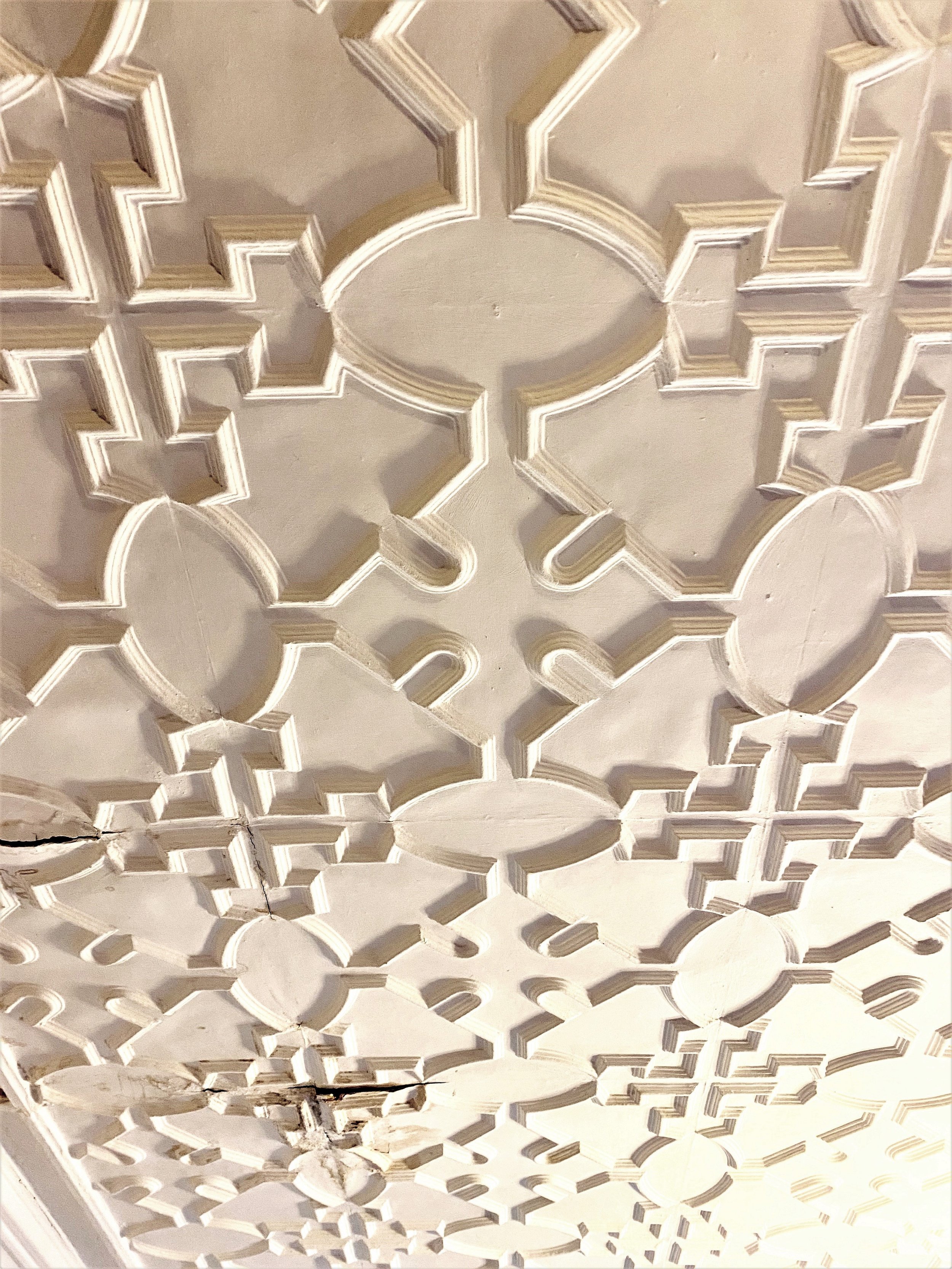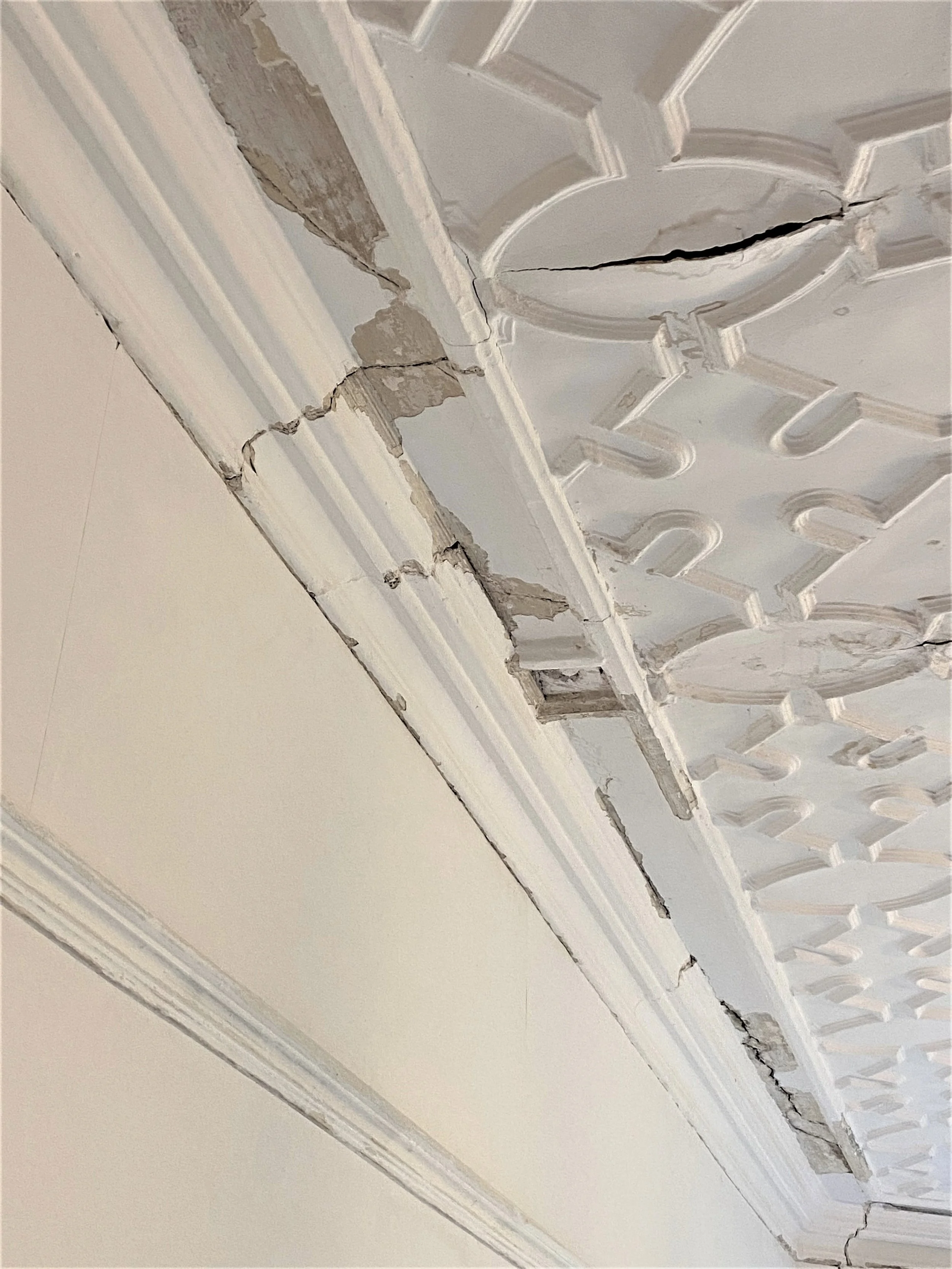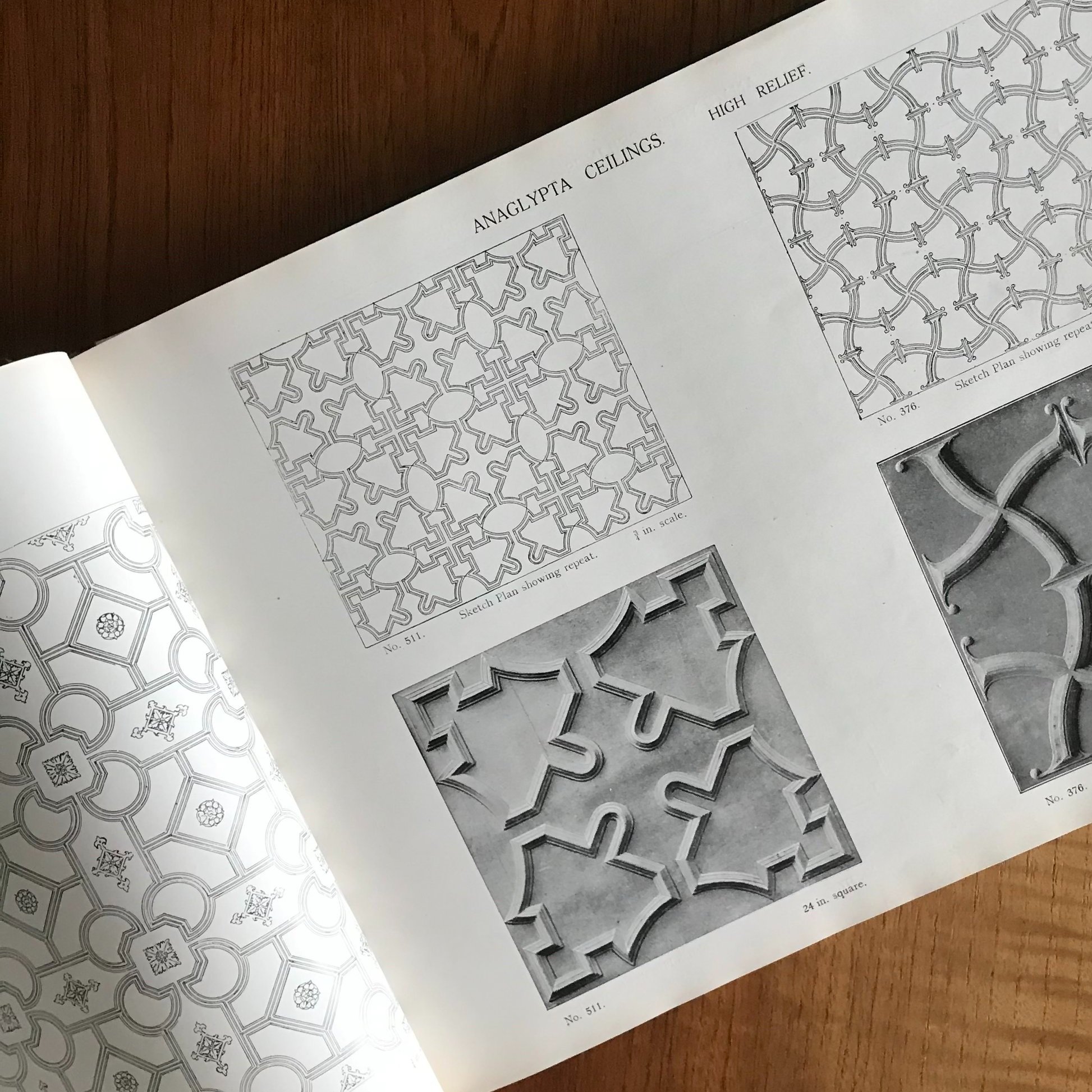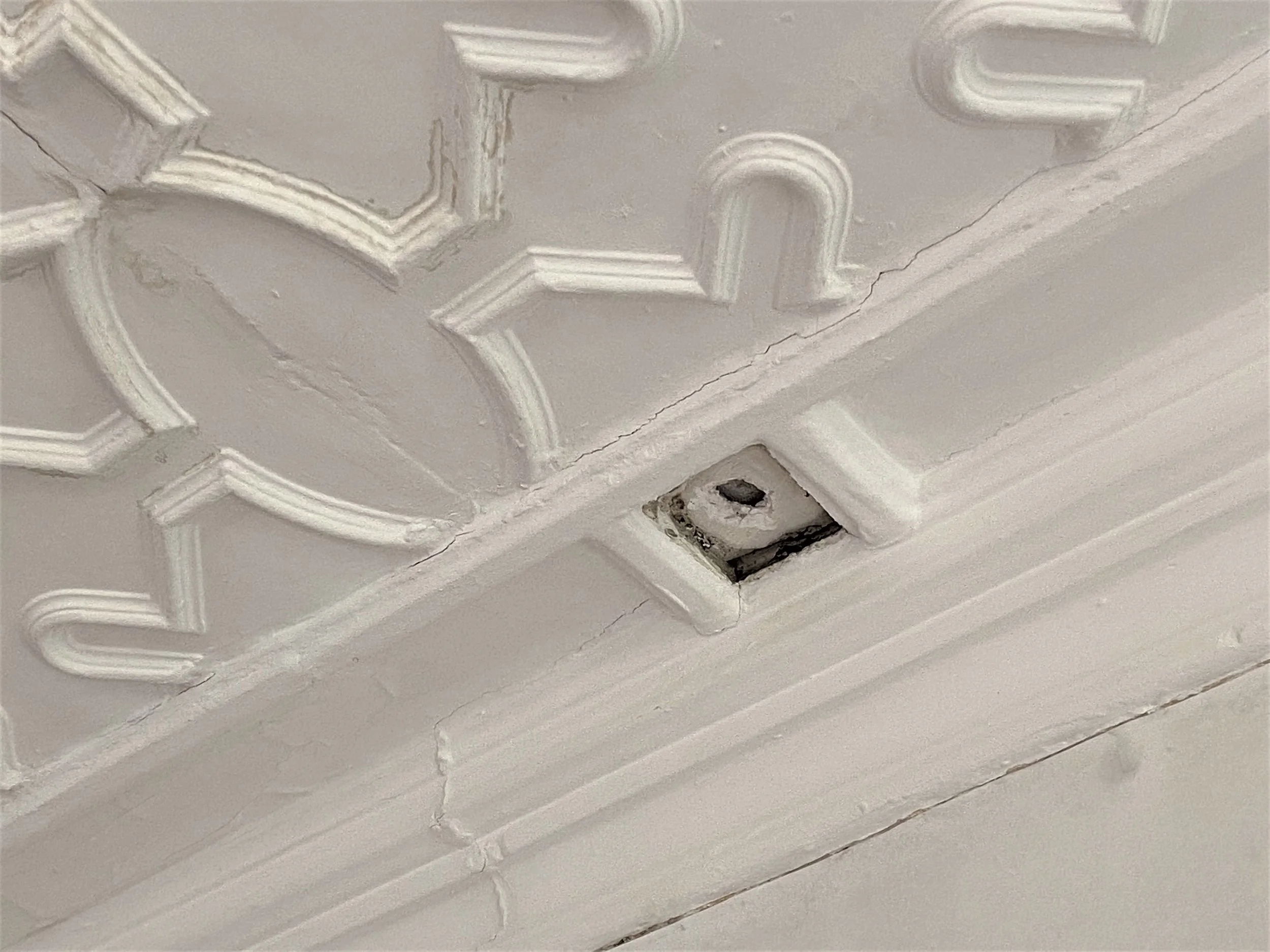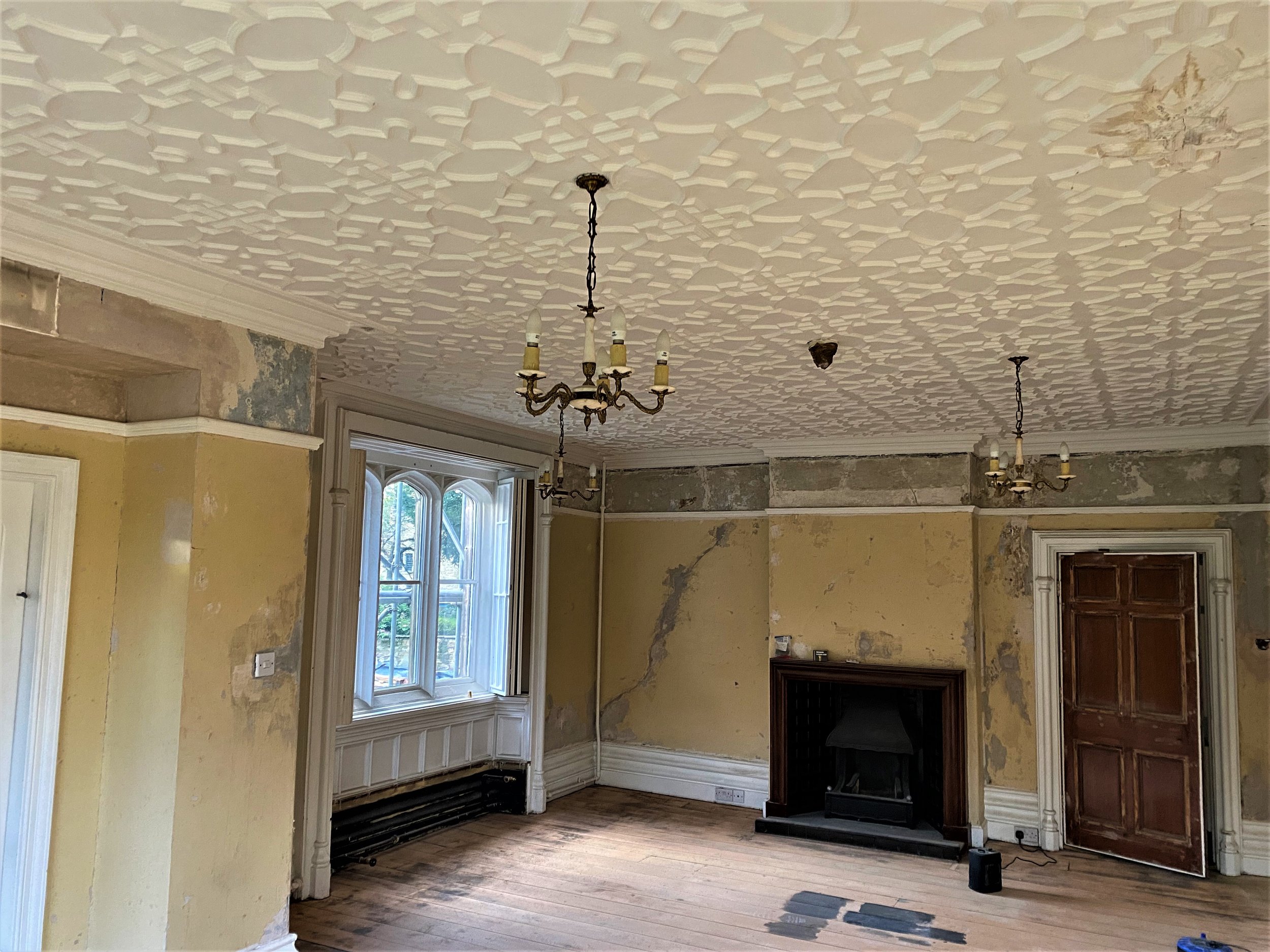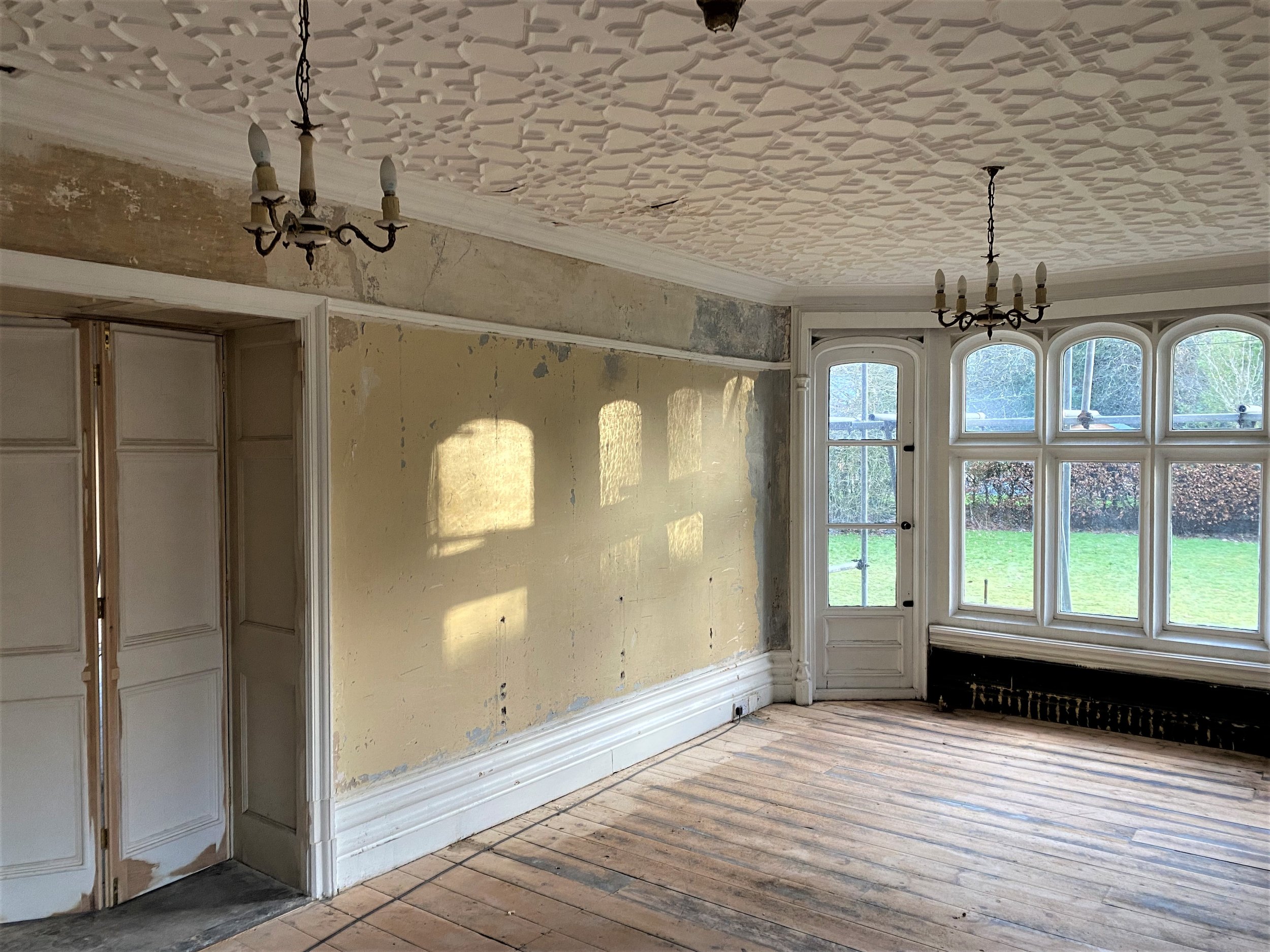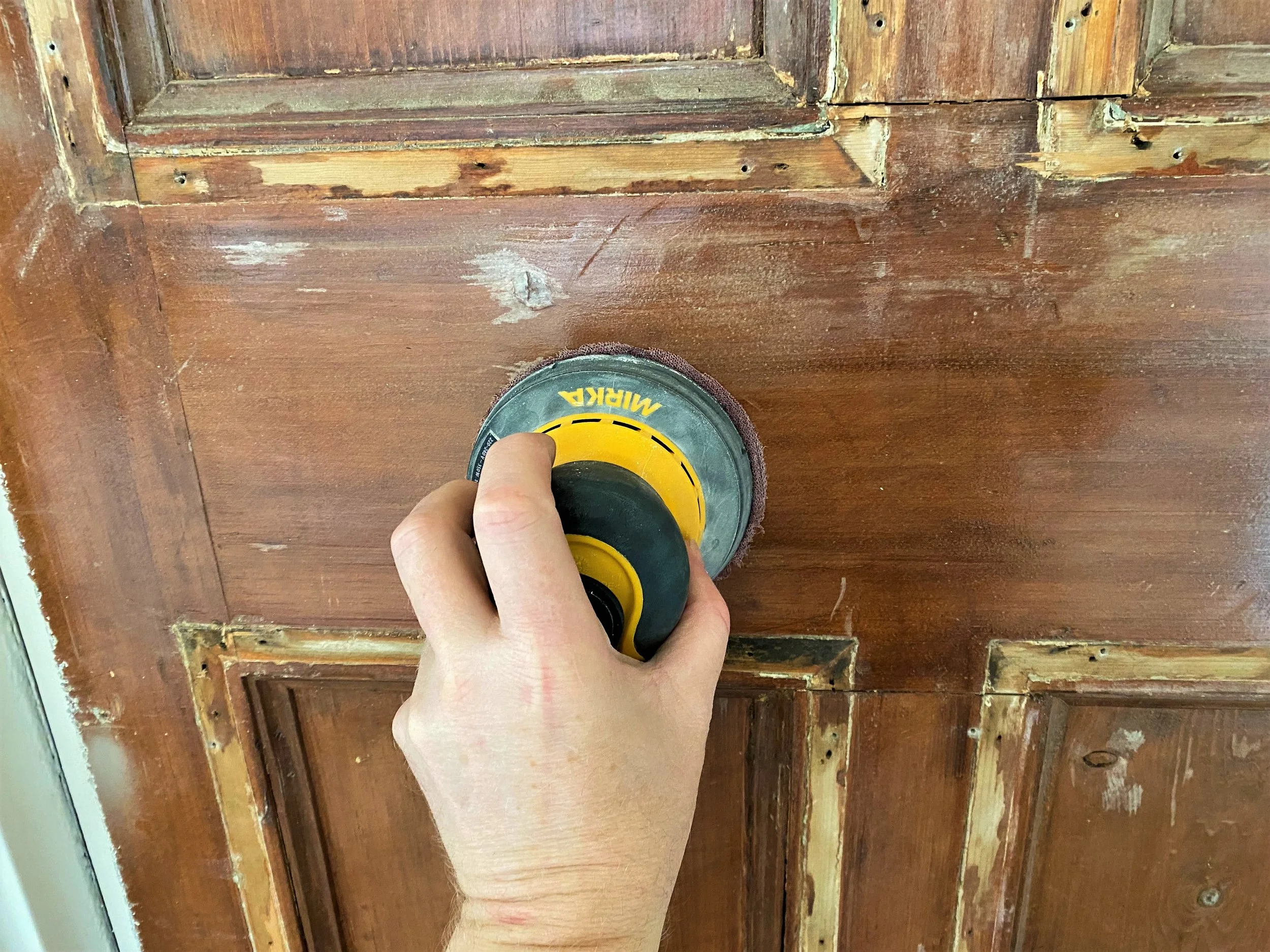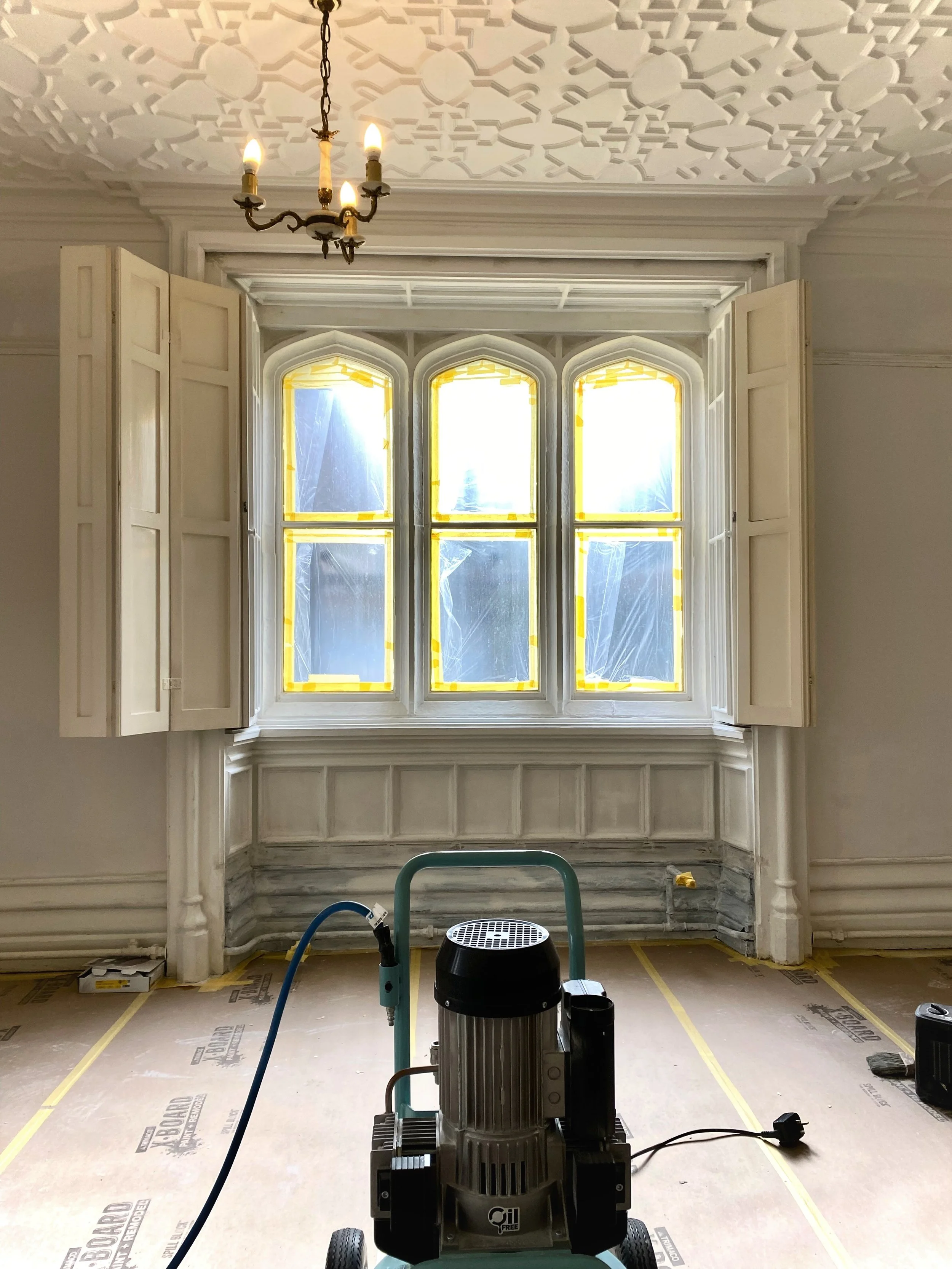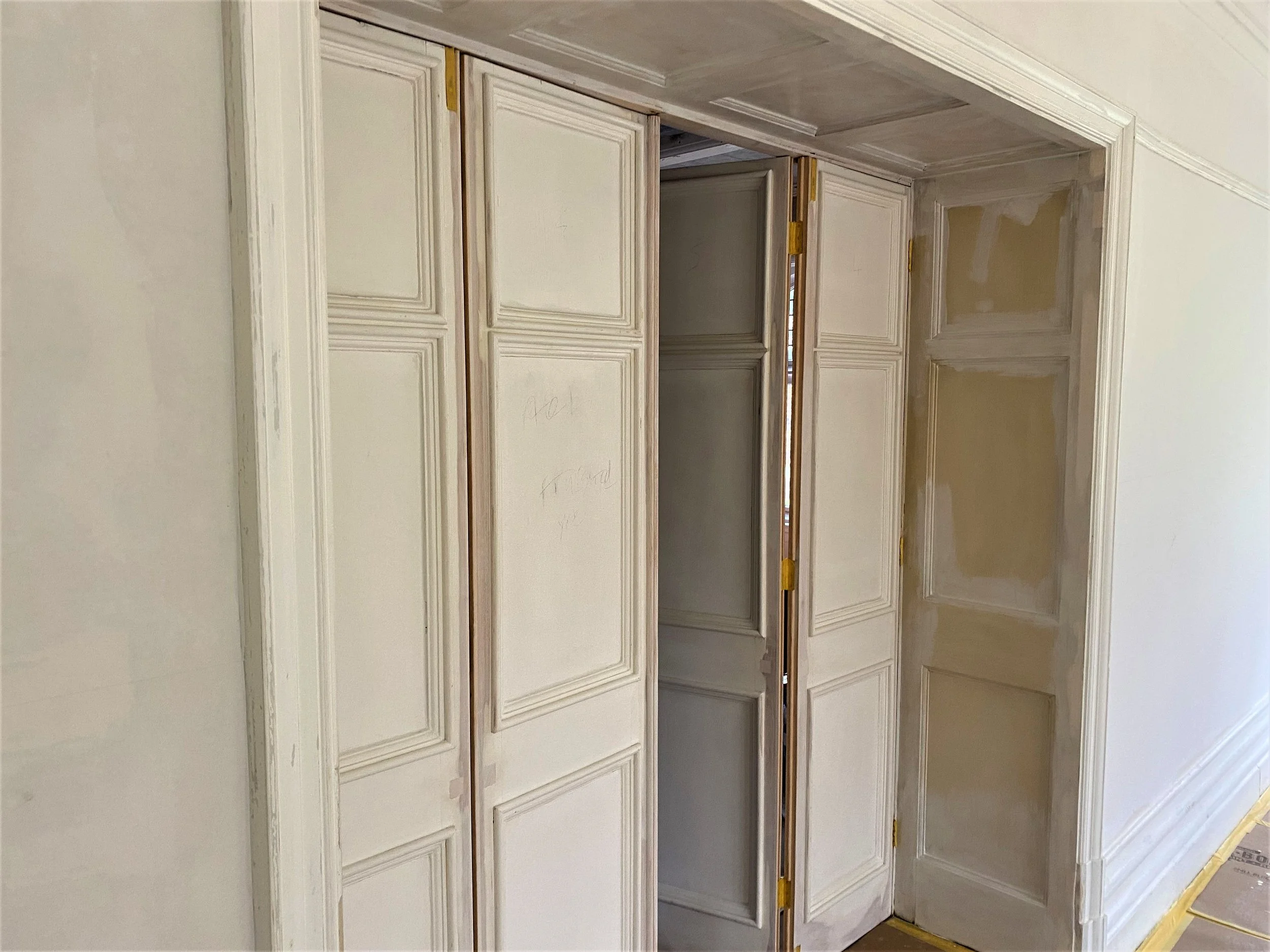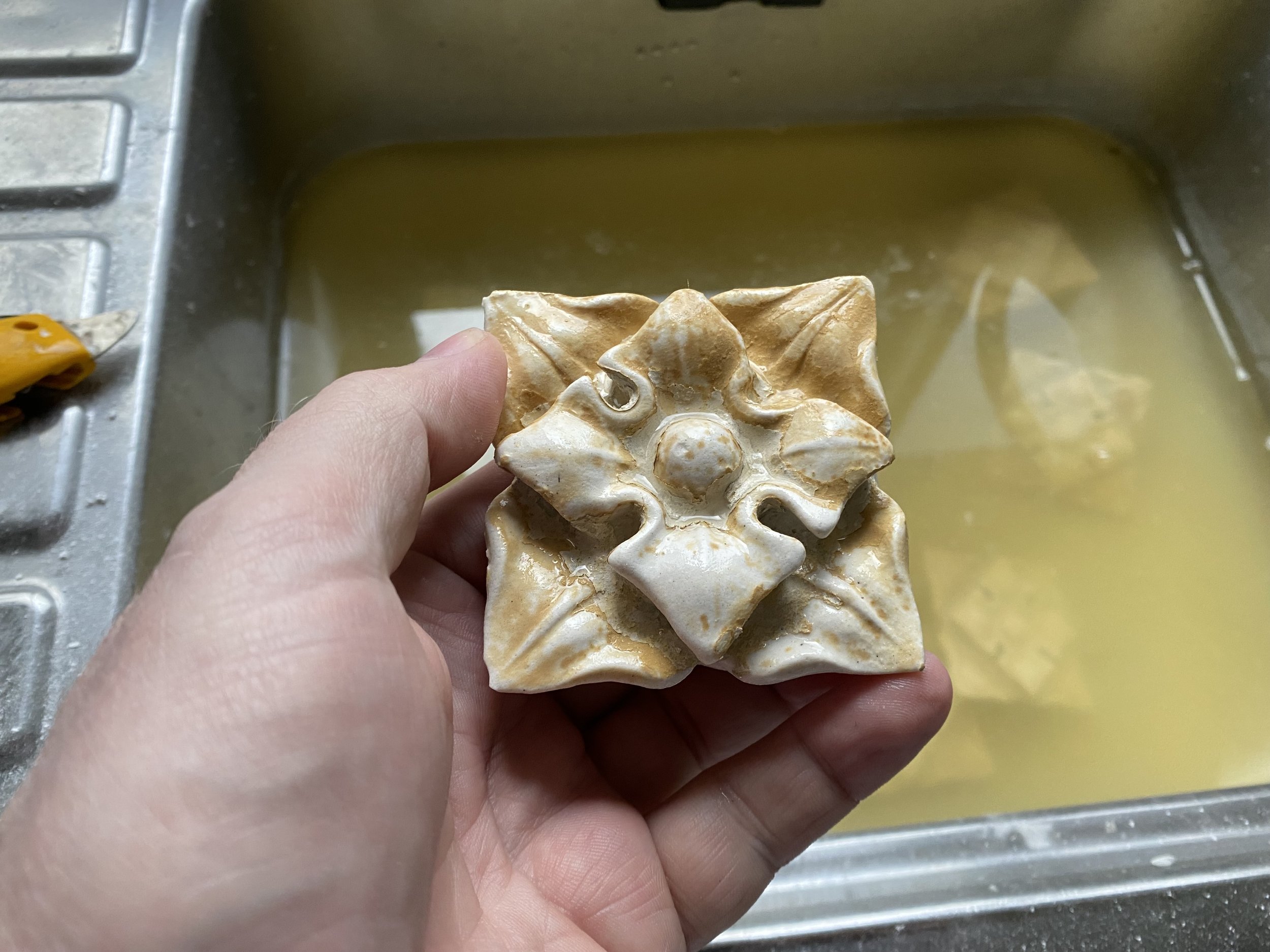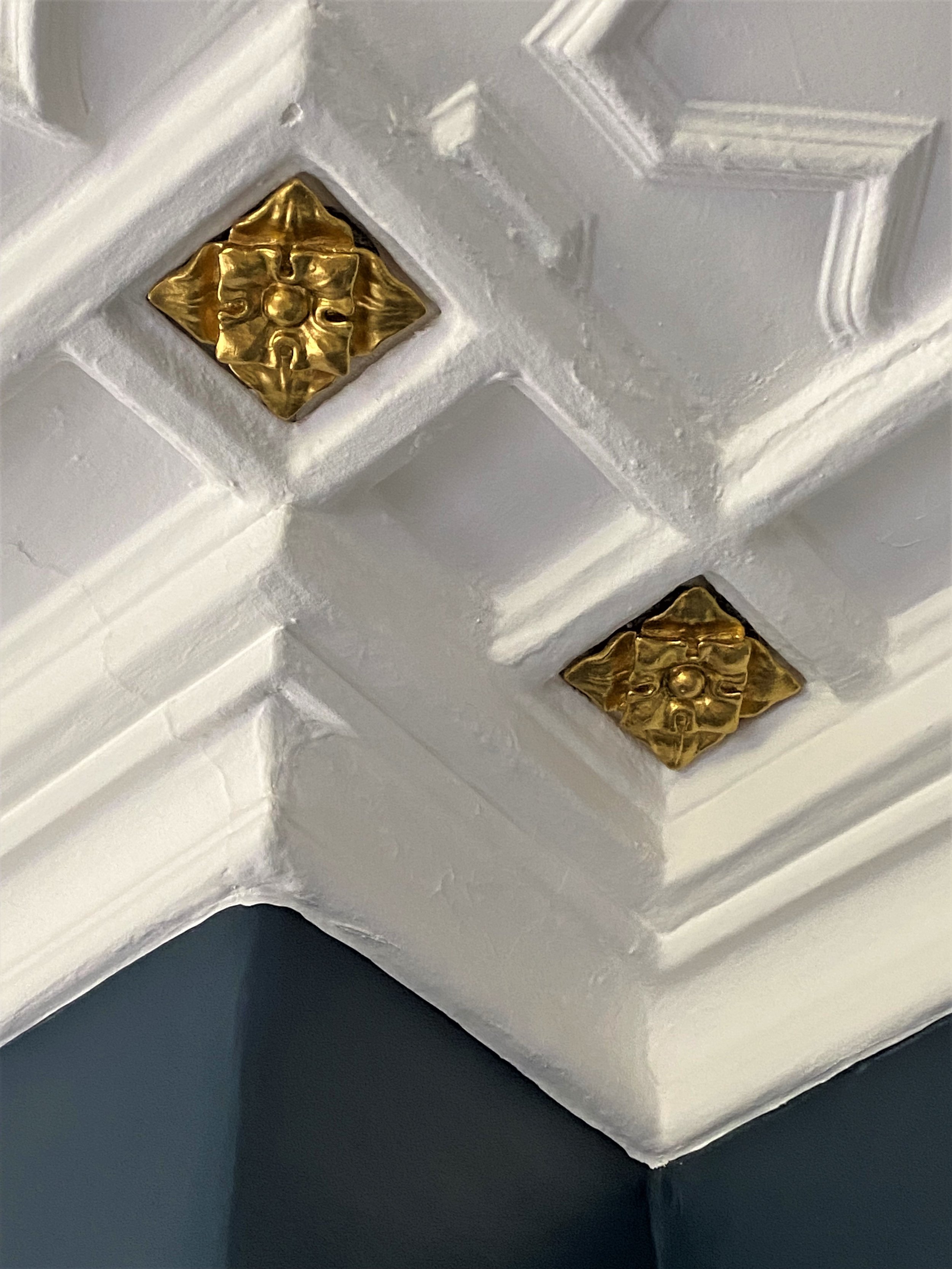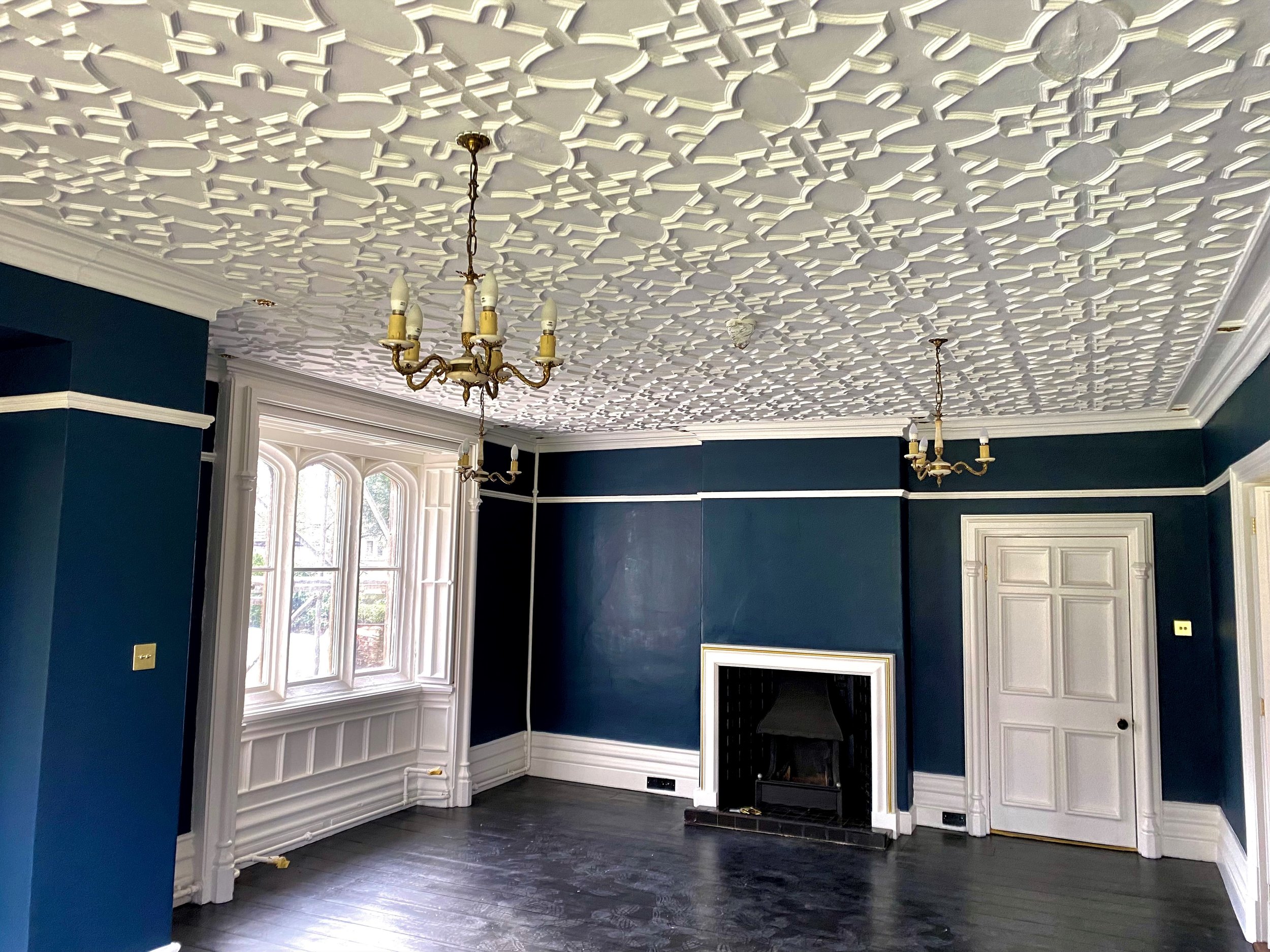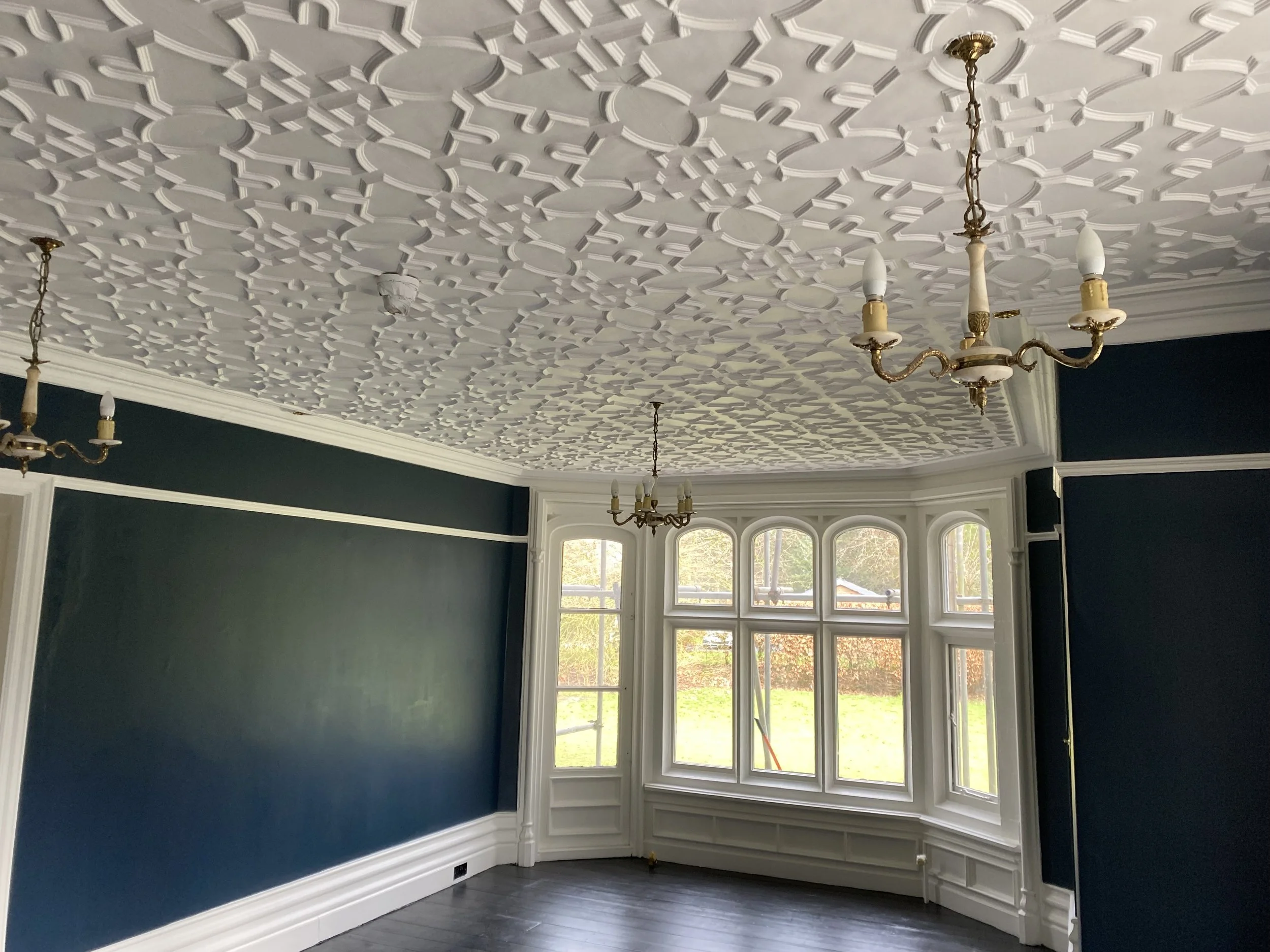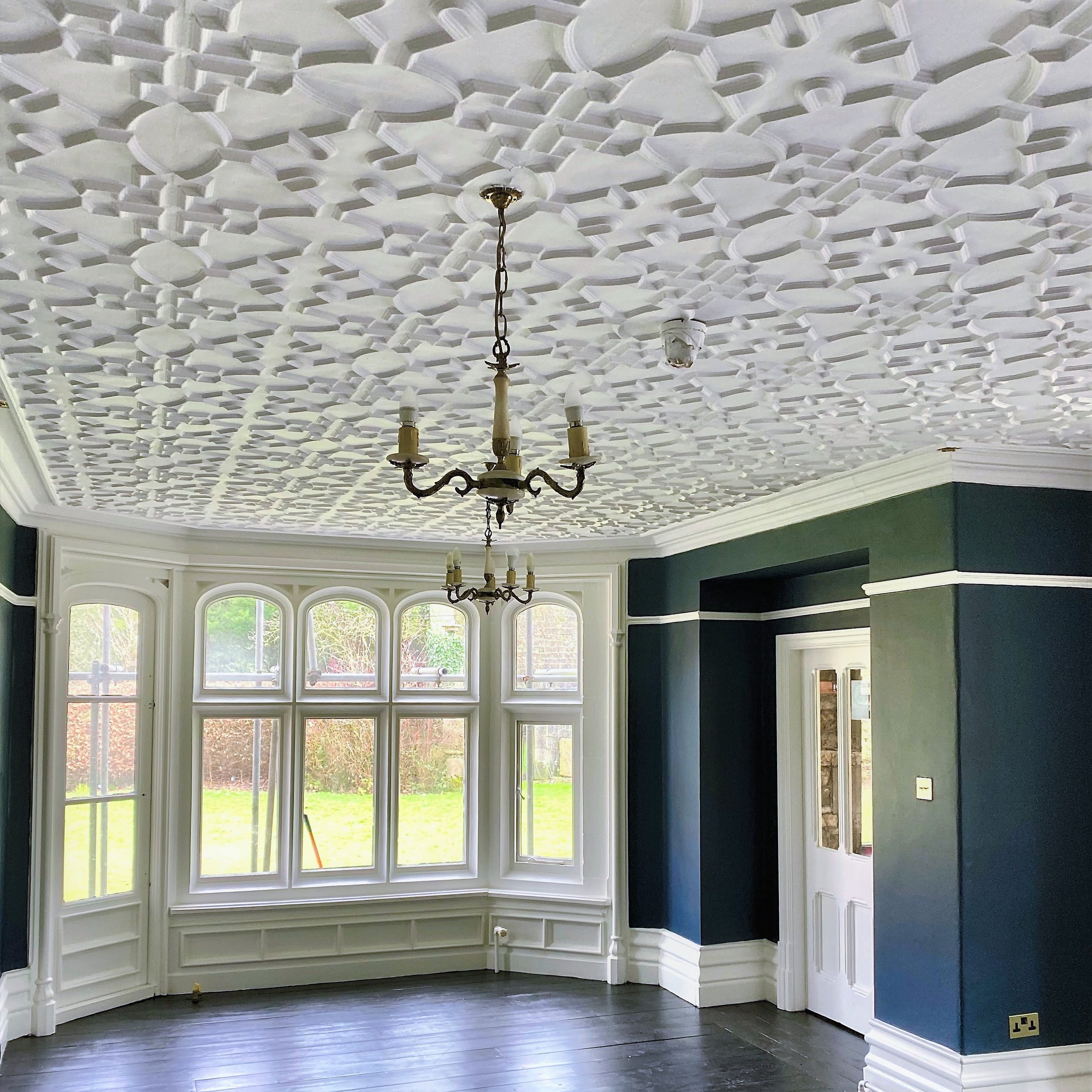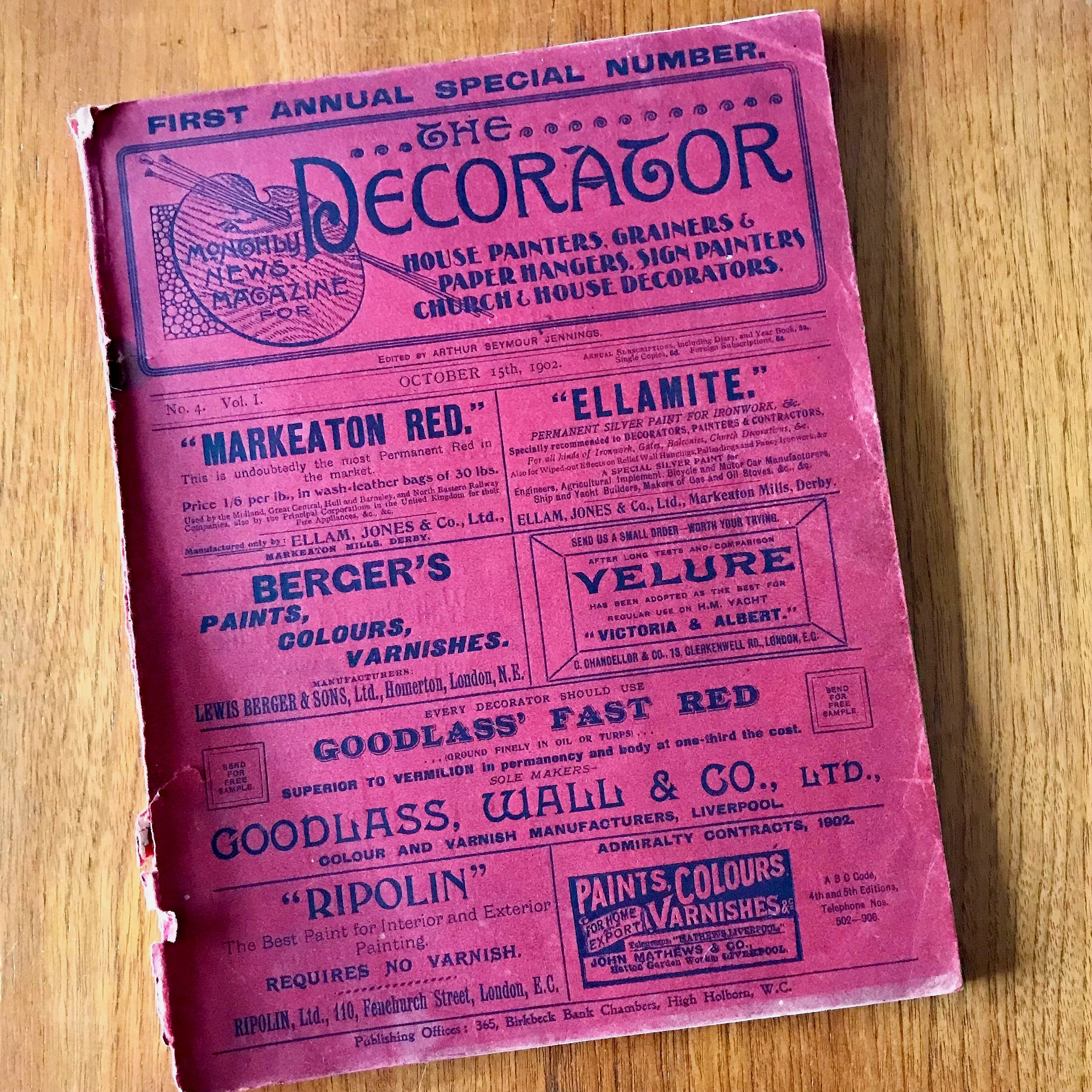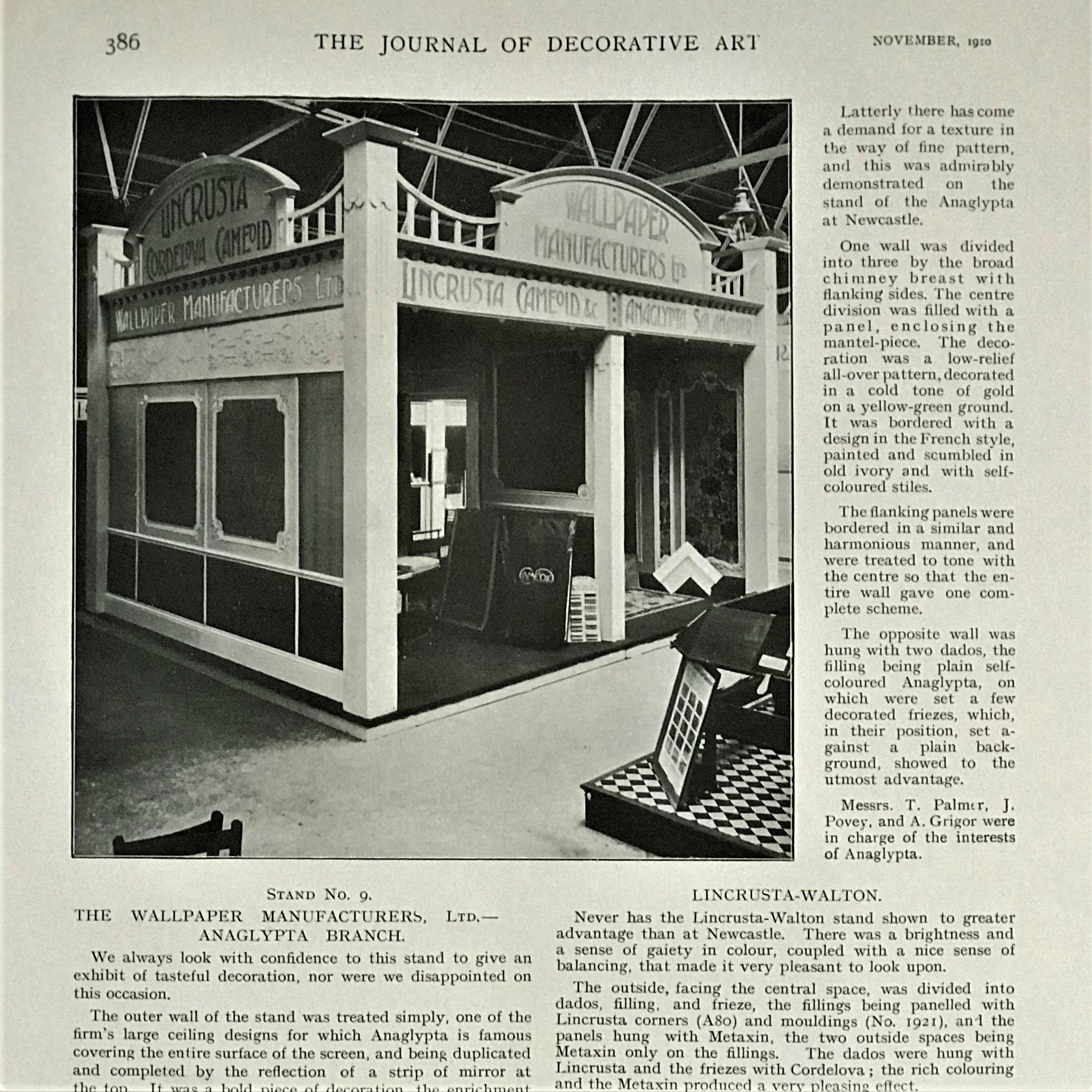Victorian Anaglypta Ceiling Repair
Anaglypta and Lincrusta – A Brief History
Lincrusta-Walton was established in 1877 by Frederick Walton (the inventor of Linoleum) and was an instant success. By 1883 Thomas Palmer (then a London manager at Lincrusta-Walton) developed an embossed paper pulp product which was lighter and cheaper than Lincrusta, but Mr Walton didn’t take it up. So Mr Palmer left and partnering with The Storey Brothers, Anaglypta went into production in 1888 at Queens Mill, Lancaster. By 1894 production was relocated to Potters Mill, Darwen, and was later incorporated into the Wallpaper Manufacturing Company, as was Lincrusta. Due to their enormous popularity, similar relief wall and ceiling coverings soon came to market.
Archive photos below show Anaglypta and Salmanader products advertised together (The Decorator Magazine, 15th October 1902) and both products exhibited alongside Lincrusta, Cordelova, and Cameoid relief wall and ceiling coverings in 1910 (The Journal of Decorative Arts, November 1910).
The Industrial Revolution meant that many decorative items for the home became more affordable and accessible to the masses. The Victorian middle classes with aspirations and refined tastes loved the versatility of Lincrusta and Anaglypta’s ornate ceiling designs, wallcoverings, friezes and borders. Top artists and designers of the day such as Dr Christopher Dresser, George C Haite, and Owen W Davis, were engaged by Lincrusta-Walton and Anaglypta to create a multitude of beautiful designs to choose from.
Anaglypta Ceiling Restoration
This original high relief ceiling had incurred some damage from years of slow water ingress and Frank was engaged to undertake the restoration work. Meanwhile, behind the scenes, Amanda searched through the archives and identified the Victorian ceiling tile design in our old trade catalogue for Anaglypta. Knowing that it may possibly be Salamander, (a similar relief product containing asbestos for its fire retardant properties), we recommended testing for asbestos before any work began, which came back negative.
It is difficult to put an exact date on this ceiling installation as the house pre-dates the Anaglypta, but given the close proximity to Lancaster, it is highly likely to date circa 1888-1894 whilst manufactured by The Storey Brothers. Although, from records, we know this design was still in production in 1931.
Preparation is key and constituted over 80% of the work involved, There is a lot of woodwork in this room, original window shutters, several doors, panelling and the fire surround. Frank cleaned and prepared the surfaces, including sanding and lining the walls, repairing and re-fixing the Anaglypta ceiling tiles. The windows were masked off and floor protected before spray painting the ceiling and all the woodwork. A contrasting deep blue matt emulsion was chosen for the walls. Finally, the plaster rose details were cleaned, repaired, and finished in liquid gold leaf and Frank used the same gold to add detailing to the fire surround to tie it all together.


